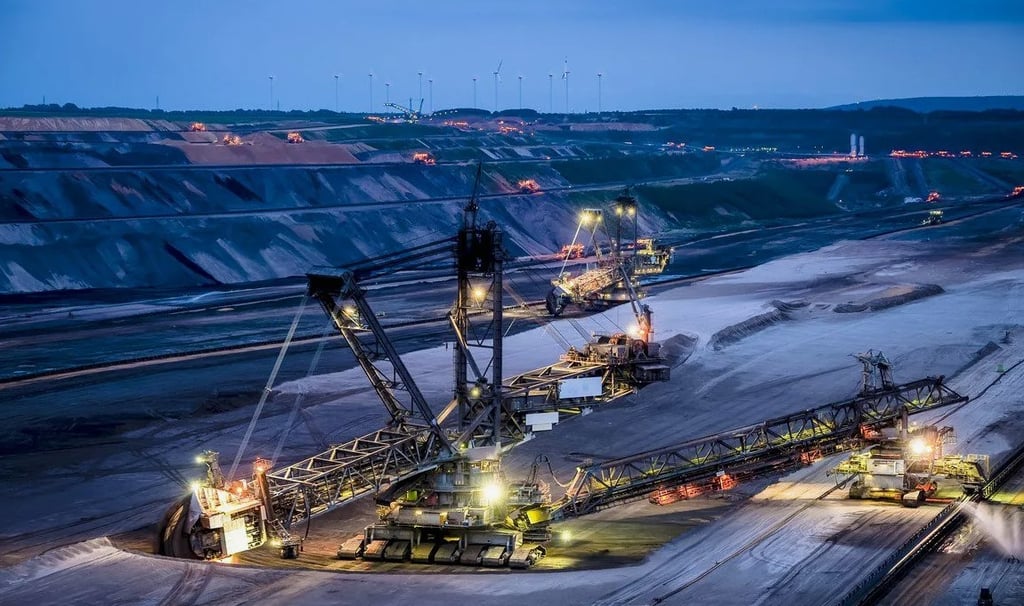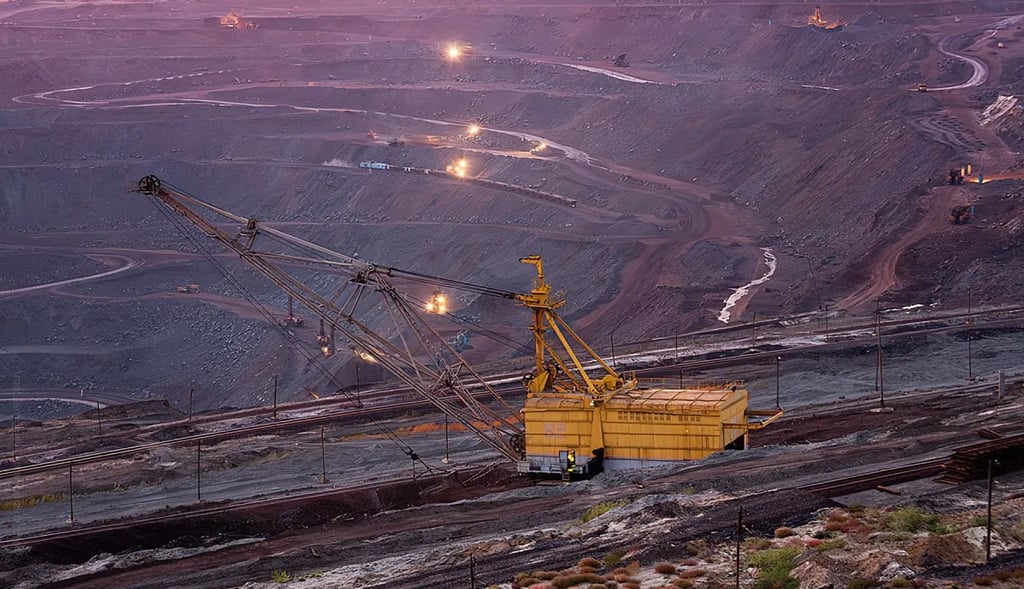Anhui Feichun Special Cable Co.,Ltd Li.wang@feichuncables.com
Why Corrosion-Resistant Cables Are Critical for South African Mining Operations
Explore the importance of corrosion-resistant cables in South African mining. Understand causes, risks, and solutions for high-risk regions like the Witwatersrand, ensuring compliance with SANS and NRCS standards for safe operations.
Li.wang@Feichun Cable
7/7/20257 min read


South Africa’s mining industry is the lifeblood of its economy, powering everything from gold and platinum to diamonds and coal. But beneath the surface of this powerhouse lies a silent threat: cable corrosion. In the harsh environments of South African mines—whether the sun-scorched open pits of the Northern Cape or the humid, acid-laden depths of the Witwatersrand Basin—cables are the unsung heroes that keep operations running. They power heavy machinery, ensure communication, and support critical safety systems. Yet, corrosion, driven by acid mine drainage (AMD), moisture, and extreme conditions, can degrade these vital lifelines, leading to costly downtime, safety hazards, and equipment failures.
For South African miners, engineers, and procurement managers, choosing corrosion-resistant cables is not just a technical decision—it’s a matter of operational survival. These cables must withstand chemical attacks, mechanical stress, and regulatory scrutiny while maintaining performance in some of the world’s toughest mining environments. This article dives into the causes of cable corrosion, the real risks it poses, the regions most affected, and the engineering behind corrosion-resistant cables. We’ll also explore South African standards, compliance requirements, and practical tips for selecting the right cables, addressing the needs of industry professionals and curious readers alike.
What Causes Cable Corrosion in South African Mines?
Cable corrosion in South African mines is driven by a combination of environmental and operational factors that create a perfect storm for degradation. Understanding these causes is key to mitigating risks and selecting the right cables.
Acid Mine Drainage (AMD): A major issue in gold and uranium mines, particularly in the Witwatersrand Basin, AMD occurs when sulfide minerals react with water and oxygen, producing sulfuric acid and heavy metals like uranium and cadmium. This corrosive cocktail attacks cable insulation and sheathing, leading to premature failure.
Moisture and Humidity: Underground mines, such as those in Gauteng and Mpumalanga, often face groundwater seepage, creating humid conditions that accelerate corrosion, especially in cables with inadequate water-resistant sheathing.
High Temperatures: Deep-level mines, like Mponeng, reach temperatures above 40°C, causing thermal stress that weakens cable materials and makes them more susceptible to chemical degradation.
Mechanical Stress: Cables in both open-pit and underground mines are subject to abrasion, bending, and crushing from heavy machinery and rocky terrain, which can expose conductors to corrosive elements.
Salt and Dust: In coastal mining regions like the Western Cape’s diamond mines, salt-laden air contributes to corrosion, while abrasive dust in open-pit mines, such as Sishen, wears down cable sheathing.
Chemical Exposure: Beyond AMD, mines use chemicals like cyanide for gold extraction, which can spill or vaporize, attacking cable materials if not properly protected.
These factors create a relentless assault on cables, making corrosion resistance a non-negotiable feature for mining operations.
Real Risks
Corrosion in mining cables is more than a maintenance issue—it poses serious risks to safety, productivity, and profitability. Here’s a closer look at the consequences:
Safety Hazards: Corroded cables can lead to insulation breakdown, causing electrical faults like short circuits or arc flashes. In underground mines, where flammable gases like methane are present, these faults can trigger explosions or fires, endangering workers.
Operational Downtime: A single cable failure can halt critical equipment, such as drills, pumps, or ventilation systems, leading to production losses. In South Africa’s gold mines, where operating costs are high, downtime can cost millions of rands per day.
Equipment Damage: Corroded cables may deliver inconsistent power, damaging sensitive equipment like control systems or motors, leading to costly repairs or replacements.
Environmental Impact: Faulty cables can leak hazardous materials or cause electrical spills, exacerbating environmental issues like AMD and violating South Africa’s strict environmental regulations.
Regulatory Penalties: Non-compliant cables that fail due to corrosion can lead to fines, confiscation, or operational shutdowns by the NRCS, impacting a mine’s reputation and finances.
Increased Maintenance Costs: Frequent cable replacements due to corrosion drive up maintenance budgets, diverting resources from other critical areas.
These risks underscore the need for corrosion-resistant cables that can withstand South Africa’s unique mining conditions while ensuring safety and efficiency.
Where Are the Risks Highest? A Look at Major South African Mining Regions
South Africa’s mining regions vary in their environmental and operational challenges, amplifying corrosion risks in specific areas. Below are the key regions where corrosion-resistant cables are most critical:
Witwatersrand Basin (Gauteng and Free State):
Challenges: Home to the world’s deepest gold mines, like Mponeng and TauTona, this region faces severe AMD, high temperatures (40°C+), and humidity from groundwater seepage. Narrow stopes and heavy machinery add mechanical stress.
Cable Needs: Cables must resist sulfuric acid, moisture, and thermal degradation while maintaining flexibility for trailing applications.
Rustenburg Platinum Belt (North West):
Challenges: Deep underground platinum mines deal with high humidity, chemical exposure from processing, and methane risks, increasing the need for flame-retardant and corrosion-resistant cables.
Cable Needs: Cables with robust sheathing and earth continuity conductors to ensure safety in hazardous conditions.
Northern Cape (Diamond and Iron Ore Mines):
Challenges: Open-pit mines like Sishen and Kolomela face intense UV radiation, abrasive dust, and occasional saltwater exposure in coastal diamond mines. Extreme temperature fluctuations add stress.
Cable Needs: UV-resistant, abrasion-resistant cables with strong sheathing to withstand environmental wear.
Mpumalanga Coal Fields:
Challenges: Coal mines face dust, moisture, and chemical exposure from coal processing, with open-pit and underground operations requiring versatile cables.
Cable Needs: Flexible, water-resistant cables with corrosion-resistant sheathing for both fixed and mobile equipment.
Western Cape (Diamond and Mineral Sands):
Challenges: Coastal mines are exposed to salt-laden air, accelerating corrosion, while abrasive sands and heavy machinery add mechanical stress.
Cable Needs: Salt-resistant, mechanically robust cables with UV protection for open-pit operations.
Each region demands tailored cable solutions to address its specific corrosion risks, ensuring reliability and safety.
Engineering a Solution: What Makes a Cable Corrosion-Resistant?
Corrosion-resistant cables are engineered with advanced materials and designs to combat the harsh conditions of South African mines. Key features include:
Robust Sheathing:
Materials: Chlorosulfonated polyethylene (CSPE), polyurethane, or polychloroprene (PCP) sheaths provide resistance to AMD, chemicals, and moisture. Polyurethane is particularly effective against sulfuric acid in Witwatersrand mines.
Benefits: Prevents penetration of corrosive substances, extending cable lifespan.
Insulation Materials:
Materials: Ethylene propylene rubber (EPR) or cross-linked polyethylene (XLPE) offer high dielectric strength and thermal resistance, maintaining performance in high-temperature environments.
Benefits: Protects conductors from corrosion-induced electrical faults.
Tinned Copper Conductors:
Design: Tinning copper conductors with a thin layer of tin enhances corrosion resistance, especially against moisture and chemical exposure.
Benefits: Ensures reliable power delivery and reduces oxidation.
Armouring:
Design: Steel wire braiding or tape armouring protects against mechanical damage, preventing exposure of conductors to corrosive elements.
Benefits: Enhances durability in abrasive environments like open-pit mines.
Water-Resistant Designs:
Design: Sealed or water-blocking layers prevent moisture ingress, critical in humid underground mines.
Benefits: Reduces corrosion risks from groundwater seepage.
Flame-Retardant and LSZH Properties:
Design: Low-smoke, zero-halogen (LSZH) materials limit fire spread and toxic emissions, crucial for underground safety.
Benefits: Enhances worker safety in confined spaces.
UV Resistance:
Design: UV-stabilized sheathing prevents degradation in open-pit mines exposed to intense sunlight.
Benefits: Extends cable lifespan in regions like the Northern Cape.
These engineering features ensure that corrosion-resistant cables can withstand the chemical, thermal, and mechanical challenges of South African mines.
Standards & Compliance in South Africa
South Africa’s mining industry operates under strict regulatory oversight to ensure safety and performance. Corrosion-resistant cables must comply with South African National Standards (SANS) and National Regulator for Compulsory Specifications (NRCS) requirements.
SANS Standards
SANS 1520-1: Governs flexible trailing cables, ensuring corrosion resistance, flexibility, and electrical safety for mobile equipment.
SANS 628: Specifies requirements for armoured cables, emphasizing mechanical and corrosion resistance for high-voltage applications.
SANS 10139: Mandates flame-retardant and LSZH properties to minimize fire risks and toxic emissions in underground mines.
SANS 1515-1: Influences cable requirements for gas monitoring systems, requiring corrosion resistance in methane-prone areas.
NRCS Regulations
Mandatory Approval: All cables must be NRCS-approved, verified through testing in SANAS-accredited laboratories.
SABS Permit Scheme: Manufacturers and importers require permits for quality control and traceability.
Safety and Environmental Focus: Regulations prioritize worker safety and environmental protection, requiring cables to resist corrosion without compromising performance.
Compliance Challenges
Manufacturers must conduct rigorous testing, including:
Chemical Resistance Tests: Simulating exposure to AMD and other corrosives.
Abrasion and Impact Tests: Ensuring durability in rocky environments.
Thermal Cycling: Verifying performance in high-temperature conditions. Non-compliant cables face confiscation, fines, or operational bans.
Benefits of Compliance
Safety: Reduces risks of electrical faults and fires.
Reliability: Ensures consistent performance, minimizing downtime.
Legal Protection: Avoids penalties and operational disruptions.
How to Choose the Right Cable for Your Mine
Selecting corrosion-resistant cables for South African mines requires balancing technical requirements, environmental conditions, and regulatory compliance. Here’s a practical guide:
Assess Environmental Conditions:
AMD-Prone Areas: Choose polyurethane or CSPE-sheathed cables for Witwatersrand gold mines.
Coastal Mines: Opt for salt-resistant, UV-stabilized cables for Western Cape operations.
High-Temperature Zones: Select EPR or XLPE-insulated cables for deep mines.
Evaluate Operational Needs:
Mobile Equipment: Use flexible trailing cables (e.g., SANS Type 66) for drills and loaders.
Fixed Installations: Choose armoured cables for pumps and ventilation systems.
Safety Systems: Prioritize LSZH cables for emergency communication and gas monitoring.
Check Regulatory Compliance:
Ensure NRCS approval and compliance with SANS 1520-1, SANS 628, and SANS 10139.
Verify testing certifications from SANAS-accredited laboratories.
Consider Budget and Longevity:
Invest in high-quality cables to reduce maintenance and replacement costs.
Balance initial costs with long-term reliability to avoid downtime.
Consult Manufacturers:
Work with reputable suppliers who offer tailored solutions, such as custom sheathing for AMD resistance.
Request site-specific assessments to match cables to mine conditions.
Prioritize Safety Features:
Choose cables with ECC for high-risk underground environments.
Ensure flame-retardant and LSZH properties for confined spaces.
Practical Example
Mponeng Gold Mine: Uses polyurethane-sheathed Type 66 ECC cables to resist AMD and ensure grounding in methane-prone areas.
Sishen Iron Ore Mine: Employs UV-resistant, armoured cables for open-pit haul trucks, balancing cost and durability.
By aligning cable selection with site-specific needs and regulations, miners can optimize safety and efficiency.
Corrosion-resistant cables are the backbone of South African mining operations, ensuring reliable power and communication in some of the world’s harshest environments. From combating acid mine drainage in the Witwatersrand to withstanding UV radiation in the Northern Cape, these cables are engineered to tackle corrosion’s real risks—safety hazards, downtime, and equipment damage. By leveraging advanced materials like polyurethane sheathing, EPR insulation, and tinned copper conductors, corrosion-resistant cables deliver durability and performance while meeting SANS and NRCS standards.
For South African mining professionals, choosing the right cable involves understanding regional challenges, operational needs, and regulatory requirements. Whether powering heavy machinery in open-pit mines or ensuring safety in deep underground shafts, corrosion-resistant cables are a critical investment in productivity and safety. As South Africa’s mining industry evolves with mechanization and sustainable practices, these cables will continue to play a pivotal role, supporting the nation’s economic backbone while protecting its workers and environment.



Email Address: Li.wang@feichuncables.com
© 2025. All rights reserved.


One-click to Quickly Contact
Products
Offshore & Marine Cable
XLPE Cable
Contact
Company
Location:
Building A Private Science and Technology Park, Hefei Economic and Technological Development Zone, Anhui Province, China
